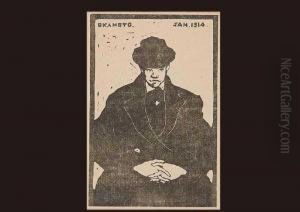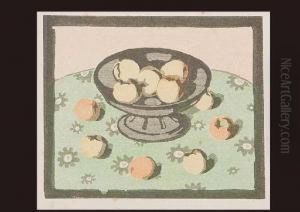Okamoto Kiichi Paintings
Okamoto Kiichi was a Japanese artist whose life and career were tragically cut short, yet during his brief period of activity, he managed to leave a lasting impact on the world of Japanese art. Born in 1904, Okamoto emerged during a period of great cultural and artistic transformation in Japan, a time when the country was increasingly opening up to Western influences while also seeking to preserve its own traditional arts and cultural identity.
Okamoto's work is characterized by his ability to blend these two worlds—the traditional Japanese aesthetic and the modernist trends that were sweeping through the art world in the early 20th century. His paintings often featured elements of Nihonga (traditional Japanese painting), yet were executed with techniques and sensibilities that were influenced by Western modernism. This fusion created a body of work that was both uniquely Japanese and universally appealing.
Despite his promising talent, Okamoto's career was dramatically shortened when he died at the age of 26 in 1930. The cause of his early death is not widely documented, which adds an element of mystery and tragedy to his life story. In his short life, however, Okamoto managed to participate in several important exhibitions, and his works were recognized for their innovative approach and technical skill.
After his death, Okamoto Kiichi's contributions to art were somewhat overshadowed by the works of his contemporaries and the tumultuous events of the 20th century. However, in recent years, there has been a resurgence of interest in his work, with art historians and collectors alike revisiting his contributions to the modernist movement in Japan. Okamoto's legacy is now seen as an important bridge between traditional Japanese art and the modernist impulses that would come to define much of the 20th century's artistic output. His work continues to be celebrated for its beauty, innovation, and the poignant story of a brilliant life cut tragically short.

